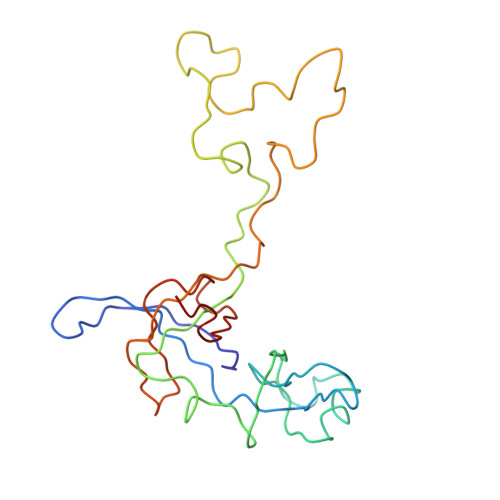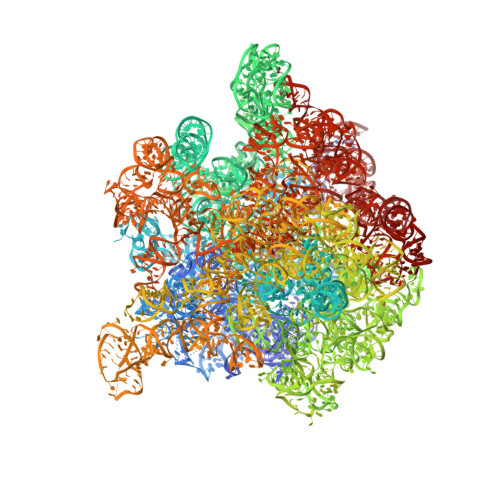Induced-fit tightens pleuromutilins binding to ribosomes and remote interactions enable their selectivity.
Davidovich, C., Bashan, A., Auerbach-Nevo, T., Yaggie, R.D., Gontarek, R.R., Yonath, A.(2007) Proc Natl Acad Sci U S A 104: 4291-4296
- PubMed: 17360517
- DOI: https://doi.org/10.1073/pnas.0700041104
- Primary Citation of Related Structures:
2OGM, 2OGN, 2OGO - PubMed Abstract:
New insights into functional flexibility at the peptidyl transferase center (PTC) and its vicinity were obtained by analysis of pleuromutilins binding modes to the ribosome. The crystal structures of Deinococcus radiodurans large ribosomal subunit complexed with each of three pleuromutilin derivatives: retapamulin (SB-275833), SB-280080, and SB-571519, show that all bind to the PTC with their core oriented similarly at the A-site and their C14 extensions pointing toward the P-site. Except for an H-bond network with a single nucleotide, G2061, which involves the essential keto group of all three compounds, only minor hydrophobic contacts are formed between the pleuromutilin C14 extensions and any ribosomal component, consistent with the PTC tolerance to amino acid diversity. Efficient drug binding mode is attained by a mechanism based on induced-fit motions exploiting the ribosomal intrinsic functional flexibility and resulting in conformational rearrangements that seal the pleuromutilin-binding pocket and tightens it up. Comparative studies identified a network of remote interactions around the PTC, indicating that pleuromutilins selectivity is acquired by nonconserved nucleotides residing in the PTC vicinity, in a fashion resembling allosterism. Likewise, pleuromutilin resistant mechanisms involve nucleotides residing in the environs of the binding pocket, consistent with their slow resistance-development rates.
Organizational Affiliation:
Department of Structural Biology, Weizmann Institute, Rehovot 76100, Israel.
















